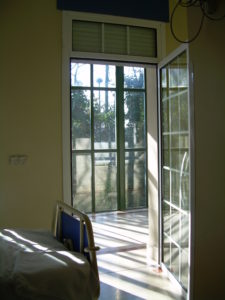 This post is by Mark Neasbey, a Director of the Australian Centre for Value Management. In this post Mark presents an example of the dilemma of the different attitudes to planning budgets identified in his last post – and how they may be overcome.
This post is by Mark Neasbey, a Director of the Australian Centre for Value Management. In this post Mark presents an example of the dilemma of the different attitudes to planning budgets identified in his last post – and how they may be overcome.
A major teaching hospital complex had reached a decision point about what the project must deliver vs the projected capital cost. Hospital facilities undergo periodic redevelopment driven by substantive changes in health care practices (models of care) and capacity to service growing populations.
Here the planning involved creating new facilities and demolishing older buildings. The models of care and health outcome objectives were clearly defined and endorsed but were complicated by the arrangement of services across the campus and the recurrent cost constraints on the health services. Moving functions around to create space for the new facilities was one aspect and another was inefficient service delivery arrangements which had evolved over time and which were compromised by the inflexibility of the existing facilities.
So it was not possible and not appropriate to just focus on the capital project cost.
These tensions were recognised and tested in a value management study process that worked through the schematic design, the relationships between services across the campus and the sequence and timing of moving services around and into the new facilities. This made it clear that the space requirements and associated capital project budget exceeded the original estimate.
Question was: Should the budget be left where it was and the scope of the initial redevelopment stage reduced, or should the budget be increased to enable it to be made larger?
By focusing on the clinical outcomes and hospital operating (i.e. recurrent) costs it was clear to senior management that a change in scope for the first stage was vital. Adding extra floor space in stage 1 enabled significant reduction in operating costs ($10m p.a.). But the extra $30m for stage 1 also enabled the second stage to be a much lower cost development – a simpler demolition and a ‘cleaner’ new build.
Question for today: What ‘take-away’ do you take away from this?

Mark’s story is a great case in point of why our traditional way of thinking and talking about asset management is inadequate: the REQUIRED LEVEL OF SERVICE was defined – the “models of care and health outcome objectives were clearly defined and endorsed” – but these “were complicated by the arrangement of services across the campus and recurrent cost constraints on the health services”.
If (as per Mark’s previous post) the project objectives are defined simply in terms of this ‘required LoS’ and BUDGET, then the project will simply go ahead as is and be measured a success*… though no one will view it as such!
This is why (at the risk of sounding like a broken record) we must change our way of thinking and communicating: if our objective is realising best possible VALUE FOR MONEY then we can have meaningful conversations about such issues and make more informed decisions. If the budget can’t be found for the higher value project, then we add it to the ‘priority projects list’ (if it is high risk, we class it as ‘backlog’).
*Mark’s story unfortunately reminded me of a similar one: another hospital was being built to deliver a required LoS within a strict budget… so the decision was made to save $150k on the footings, even though it meant that the building (on a constrained site) couldn’t accommodate another floor on top as the city grows!
To me the key question that should be asked, apart from the level of service to be satisfied, is: “What is the appropriate planning horizon for a project?”. Short, repetitive asset procurements probably only need a short planning horizon – the length of time the asset will be in service, plus the acquisition time and disposal time. However, highly complex buildings such as hospitals pose a much more challenging planning horizon. It can probably be guaranteed that there will be changes to medical practice over the life of the hospital and the same goes for technology. And probably the same goes for the type of patient, which may have much more challenging consequences e.g. longer stays by more ageing patients. Getting the planning right at the beginning of the project and building in as much flexibility as possible to cater for expected, and unexpected, changes might occur is essential.